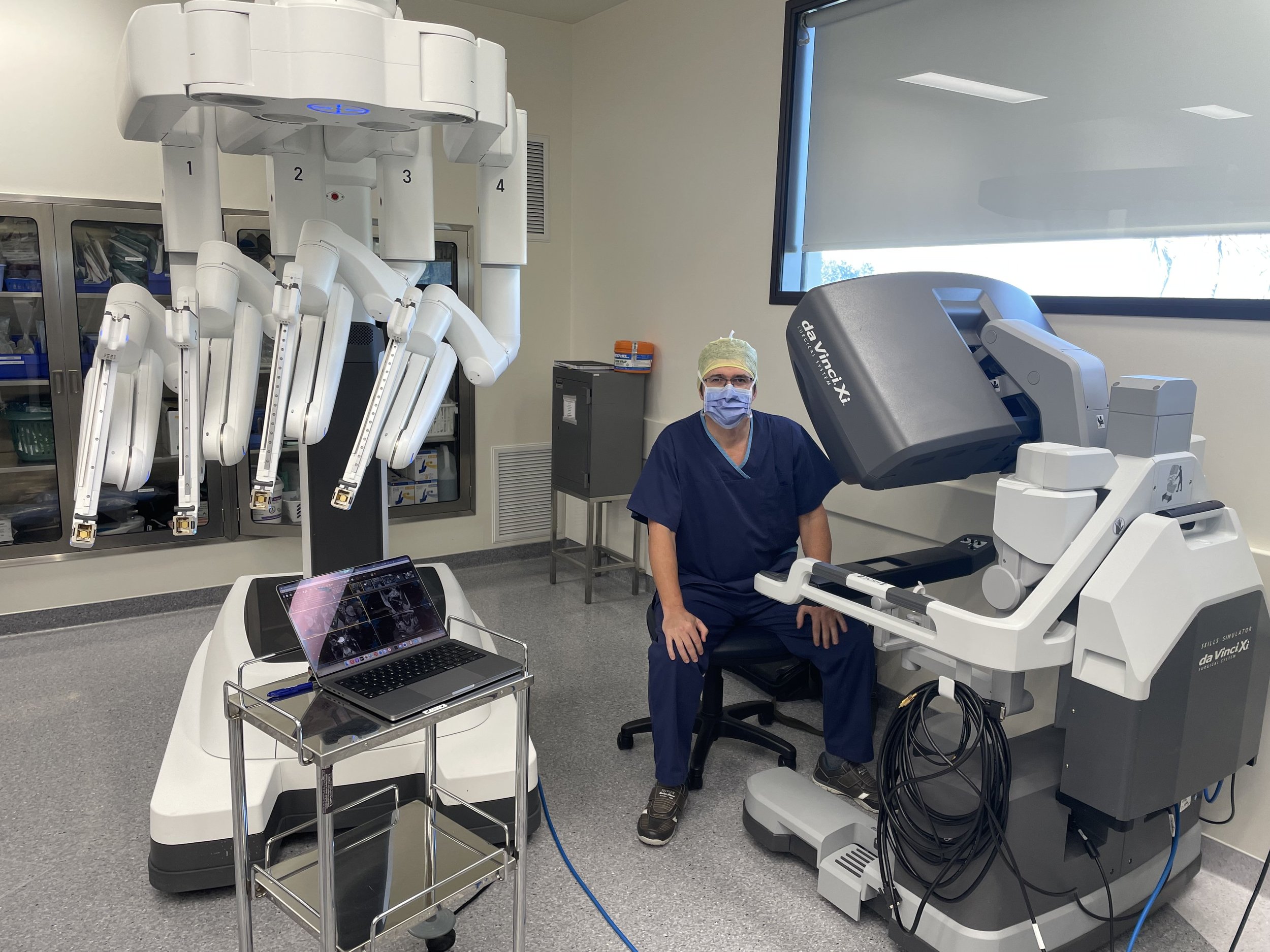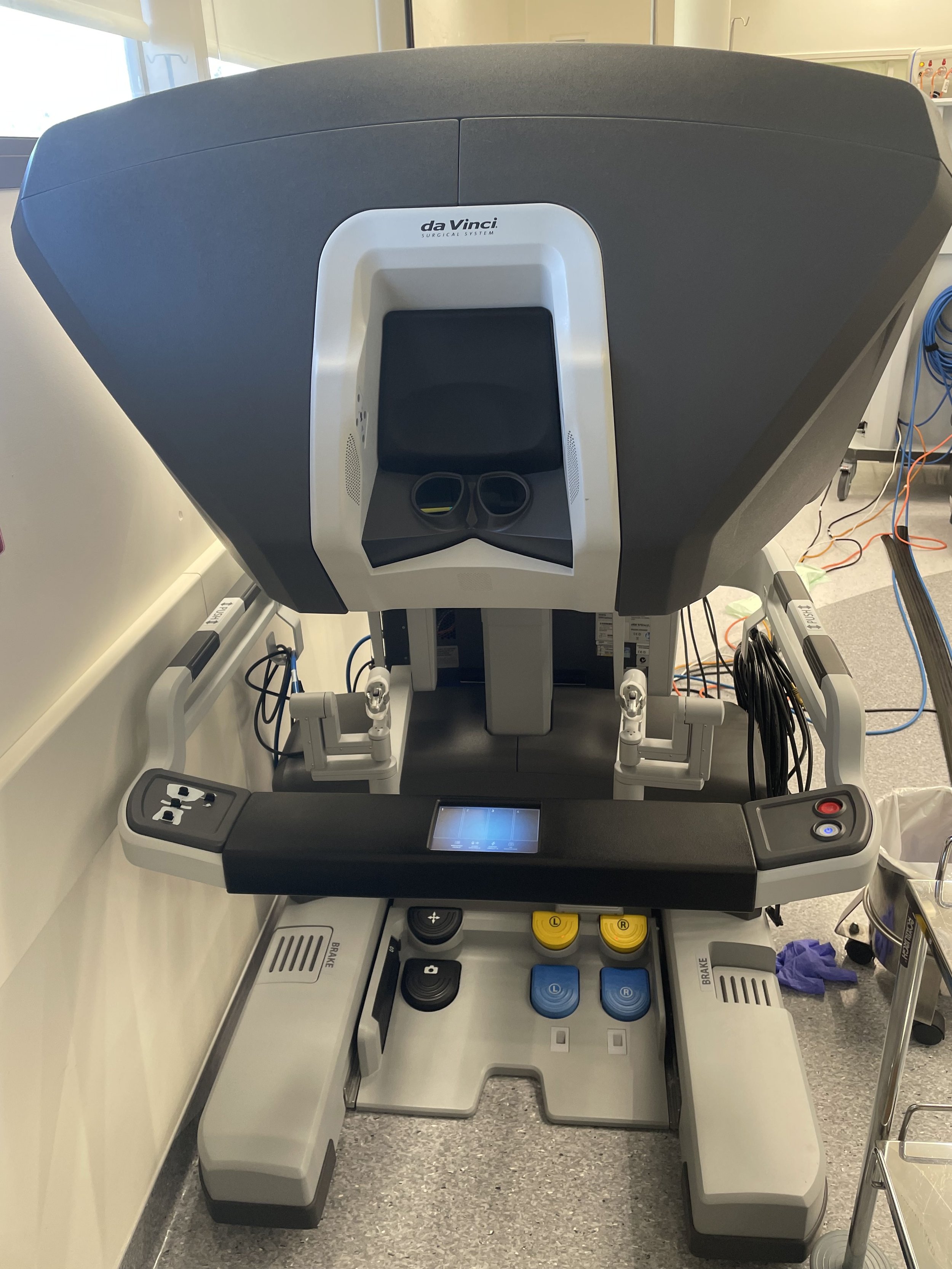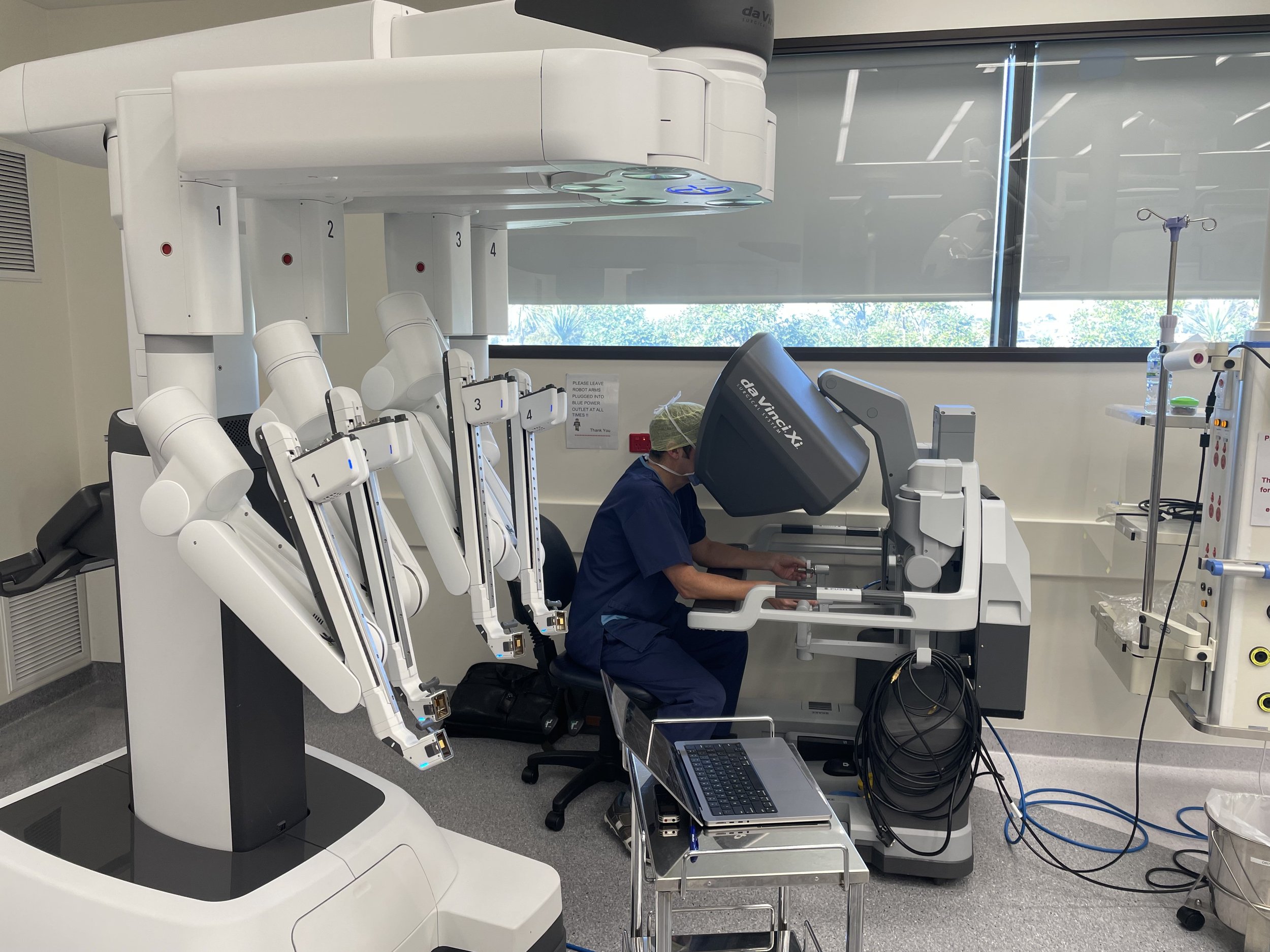Robotics
Dr Mischel Neill has extensive experience providing his patients with robotics services from his Auckland practices.
Robotic surgery is a form of minimally invasive surgery with technical refinements over standard laparoscopy that are related to the equipment used.
During the procedure, the surgeon sits at an operating console a few meters from the patient. The controls and screen have been ergonomically designed for surgeon comfort. This in turn results in more natural movements and is therefore less physically tiring.
The robotic tools are introduced at the start of the procedure by the surgeon who has assistants that stay at the bedside throughout the operation. A variety of different instruments can be introduced during the case for various purposes.
The robotic computer translates the surgeon's movements at the controls to instrument actions in real time. During this process, it scales the movements and filters out tremors to maximize the accuracy of the instrument in executing its intended task. All actions have to be initiated by the surgeon, the robot doesn't do anything independently. Throughout the procedure, the robotic computer runs a continuous ongoing safety check system.
Please call (09) 309 0912 if you wish to discuss your health further or schedule an appointment.
-

Prostatectomy
A prostatectomy is a procedure that involves removing part or all of the prostate gland.
-

Partial nephrectomy
A partial nephrectomy is a procedure that only removes the diseased tissue within a kidney.
-

Pyeloplasty
Pyeloplasty is a procedure that removes or repairs a stricture (narrowing) within the ureter.
-

Ureteric reimplantation
Ureteral reimplantation is a procedure that fixes the tubes that connect the bladder to the kidneys.
-

FAQs
Answers to the most common questions our patients ask us — from our specialities to surgery process.
“My goal is to help you live life fully through my urological services. Together, we can work through any health issues you may have.”
— Dr Mischel Neill






Why is robotic surgery so popular?
There are steadily accumulating studies showing that patients benefit from minimally invasive surgery. These benefits include:
Less blood loss and a lower blood transfusion requirement
Less post-operative pain and pain-killer requirements
Shorter hospital stays
Quicker return to daily activity and return to work
Improved recovery of function
These benefits have been introduced while maintaining the established cancer cure outcomes of open surgery.
-
The advances established by laparoscopy such as small incisions and magnified vision are preserved but have been enhanced with robotic technologies.
The system uses a high resolution 3 dimensional camera which improves depth perception as opposed to the standard 2 dimensional view in laparosocopy.
Robotic instruments have been designed with an "endowrist" that allows a much greater range of movement to that which can be achieved with standard laparoscopic instruments.
Robotic scaling and tremor filter optimize the accuracy of the instruments operating in a confined space with delicate nerve, blood vessel and support structures whose preservation may be important in protecting functional outcomes such as continence or potency.
The robotic surgical system was introduced more than 20 years ago and has an extensive, well-documented safety record throughout the world. Newer generations of robotics have allowed the upgrading of what is achievable with robotic surgery. As an example of that progress, around 95% of all radical prostatectomies performed in the USA now use a robotic system with a similar trend developing in Western European countries and Australia.
-
Robotic procedures are less invasive than open surgeries, providing patients with more minor wounds, less tissue damage, and smaller scars. These benefits usually mean less pain, reducing the need for medications and allowing patients to return to everyday life quicker.
Robotic tools also provide better visualisation of small structures, allow more precise handling of delicate tissues (such as nerves and blood vessels) and reduce surgeon fatigue (mental and physical) due to their ergonomic design. These benefits lower the risk of postoperative complications and provide lower readmission rates.
-
While robotics brings many benefits, there are some instances where another surgery type is more suitable.
For example, other types of surgery are more suitable for large cancers when there is not enough internal space for the robotic tools to get around the tumour safely. Adhesions (internal scarring) also require a different approach, as there is not enough room for robotic tools. This lack of space leads to impaired vision.
When discussing your health condition and the available treatment options, our team will explain the pros and cons of each, helping you make an informed decision.
